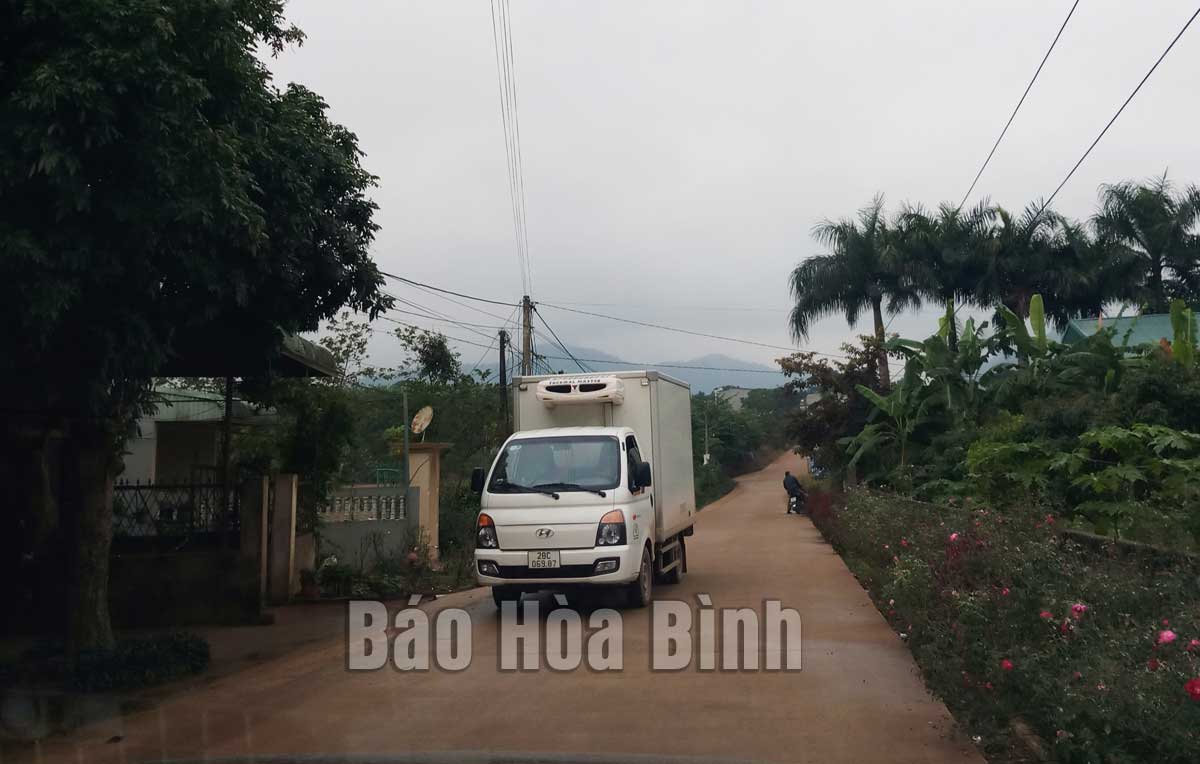
(HBO) - In 2021, Hoa Binh province’s People's Committee set a goal of having six more communes that meet new-style rural area building criteria. However, with the high consensus and determination of the whole political system, and the spirit of overcoming difficulties of each locality, by the end of the year, nine more communes in the province have been recognized as new-style rural areas, three more than the set target. Notably, some among those communes were on the list of those with extreme difficulties such as: Quyet Chien, Gia Mo (Tan Lac district), Cao Son (Da Bac district), and Huu Loi (Yen Thuy district).

A rural road in Hai Phong hamlet, Bac Phong commune (Cao Phong) is concreted, helping the commune become a new-style rural area in 2021.
When starting the implementation of the National Target Programme on New-style Rural Area Building, all communes had a very low starting point. Locals had poor material and spiritual lives, mainly depending on agricultural production. Socio-economic infrastructure did not meet development requirements, with transport difficulties being a big obstacle for communes. However, with the efforts and persistence of the Party committees and authorities at all levels, and the active support of local people, the emulation movement on new-style rural area building has brought effective results.
At present, the average per capita income of the nine communes reaches 38.94 million VND (1,716 USD) a year, an increase of 28.86 million VND compared to that in 2011. Communes with high incomes include Quang Tien (45 million VND per person) and Yen Phu (42 million VND per person). The average poverty rate in these communes is 8.34 percent, much lower than the 36.49 percent in 2011.
In order to improve the sustainable efficiency of new-style rural communes, Tran Duc Thang, Deputy Director of the Department of Agriculture and Rural Development, suggested the People's Committees of districts and Hoa Binh city continue improving the quality of awareness campaigns and organising emulation movements from the district to village levels; mobilising and diversifying resources to complete and improve the quality of criteria in accordance with sets of criteria of advanced new-style rural communes, model new-style rural communes, model new-style rural residential areas, and model gardens.
Attention will be paid to speeding up the implementation of the agricultural restructuring project in association with industry development, attracting investment from enterprises, expanding production links associated with the value chain, and creating favourable conditions for the sale of agricultural products and investment attraction./.
Playing a key role in Hoa Binh province’s economic development, Luong Son district has been focusing on science and technology development, innovation, and digital transformation.
Identifying the application of online public services as a key step in administrative procedure reform and e-government building, Kim Boi district has proactively provided services and supported residents and businesses in accessing and utilising full-process online public services promptly and efficiently. The locality aims to lift the rate of end-to-end online public services to over 90%, with all officials and civil servants handling tasks in the digital environment.
Nguyen Anh Tuyet, hailing from a family steeped in the ancient art of herbal medicine, is transforming local medicinal herbs into high-value concentrated extracts, elevating their worth and healing potential.
Nguyen Phi Long, an alternate member of the Party Central Committee, Secretary of the Hoa Binh provincial Party Committee, and head of the steering committee for the province's key projects, chaired a conference on March 25 to discuss measures for implementing the project on constructing the Hoa Lac - Hoa Binh road and upgrading the Xuan Mai - Hoa Binh section of National Highway 6 under the public-private partnership (PPP) model.
Administrative reform has been identified as a key priority in enhancing state governance, improving the business environment, and facilitating services for citizens and enterprises.
The Standing Board of the Hoa Binh provincial Party Committee met on March 18 to review and guide major investment projects aimed at boosting local socio-economic development.



